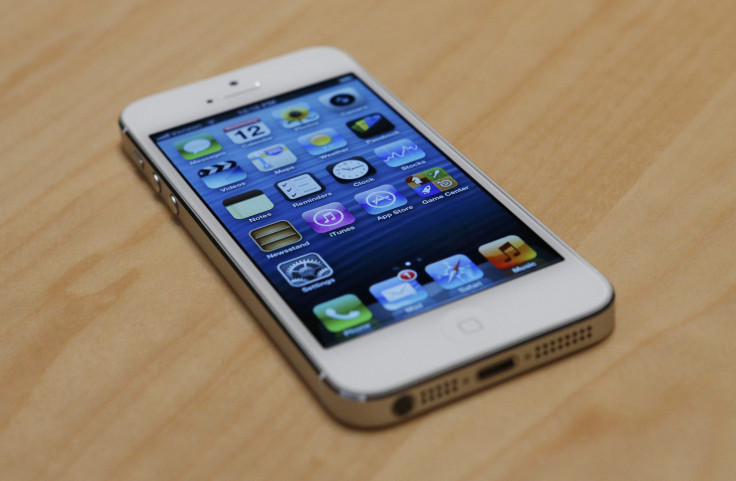iPhone 5 Vs. Galaxy S3: Samsung Apparently Best Apple In Display Specs

With a bigger screen and introduction of the in-cell touch technology, Apple has indeed put some good effort to make the new iPhone 5 stand out from the crowd. But has it done enough to outclass rivals like the Samsung Galaxy S3? According to a new IHS iSuppli report, the sixth generation iPhone does lag behind the Galaxy S3 when it comes to the screen thinness and color gamut.
The report cited measurements from the IHS iSuppli Teardown Analysis Service, which said that the display of the iPhone 5 is just 1.5 millimeters thick, a 0.6-millimeter reduction from 2.1 millimeters for its predecessor, the iPhone 4S. In addition, the color gamut of the iPhone 5 has risen to 72 percent of the NTSC standard, compared to 50 percent for the 4S.
However, according to the report, this falls short of the Samsung’s flagship Galaxy S3 that has a display with a thickness of just 1.1 millimeters and a color gamut with full 100 percent NTSC. Check out the table below.
[Source: IHS iSuppli Research]
“As the first product with in-cell touch, the iPhone 5 represents a major achievement, improving the image quality and reducing the thickness of the smartphone compared to previous models,” said Vinita Jakhanwal, director for Small & Medium Displays at IHS.
“And although the iPhone 5 still trails the Galaxy S III in the display specs race, the iPhone 5 overall remains thinner than the Galaxy S III, and its display color gamut is more than sufficient for most users. Such improvements on the iPhone 5 are consistent with Apple’s philosophy of selecting features designed to yield profitable products that deliver a superior customer experience, rather than of providing technology for technology’s sake,” Jakhanwal added.
How In-Cell Technology Helps Slimming
In-cell technology wipes out the standalone touch panel layers used in most smartphones and as an alternative integrates the touch sensors into the liquid crystal of the liquid crystal display (LCD) stack, sharing common electrodes and transistors. It also reduces display module thickness by about 0.5 millimeters, on average, that contributes toward reducing the smartphone thickness as a whole.
The report stated that the iPhone 5 is 18 percent thinner than the iPhone 4S, at a total of 7.6 millimeters. Although, the iPhone 5’s display is thicker than that of the Galaxy S3, it’s 1 millimeter thinner than the S3 on the whole.
Samsung Galaxy S3 measures 8.6 millimeters in total, and reasons behind its greater girth are some other factors separate from the display, most likely the thickness of the battery, said the report.
Lighten Up Display
Apart from making the display thin, the elimination of the separate touch overlay layer by the in-cell technology also allows more light to emanate from the display without the interruption of added refraction and glare of the extra touch layers. This is something that helps the new display to produce more lively and crisper images with improved color saturation than the iPhone 4S.
Although the iPhone 5’s display still falls short of the NTSC color gamut mark achieved by the Galaxy S3, from a user’s perspective, the lower color gamut measurement may not necessarily make the iPhone 5 display look worse than the Galaxy S3.
“Some user reviews indicate that colors presented on the Galaxy S III actually can look oversaturated and unrealistic,” Jakhanwal said. “While it may be interesting to compare the display specifications for the two phones, the actual front-of-screen viewing experience could diverge for different users.”
AMOLED Vs. LTPS LCD
Samsung Galaxy S3 features an active-matrix organic light emitting diode (AMOLED) display. On the other hand, the iPhone 5 employs the low temperature polysilicon (LTPS) LCD display.
AMOLED displays have better power efficiency than LCDs as they don’t use a backlight unit. However, according to the report, there are concerns about differential aging of organic materials, which affects OLED lifetime and power efficiency. That said, choosing LCD over OLED could be an advantage for Apple.
But although display power consumption is important, overall battery life of the device will still be dependent on many other factors.
© Copyright IBTimes 2024. All rights reserved.





















